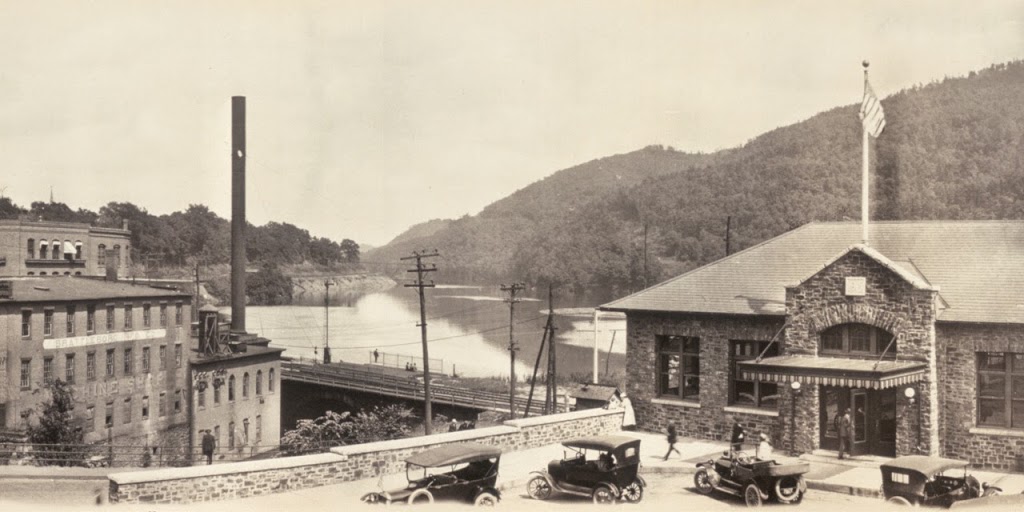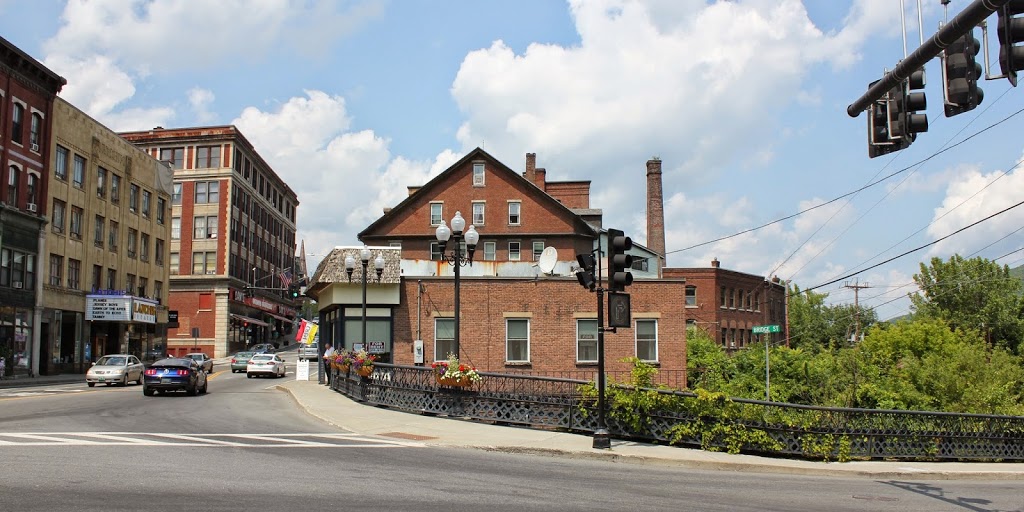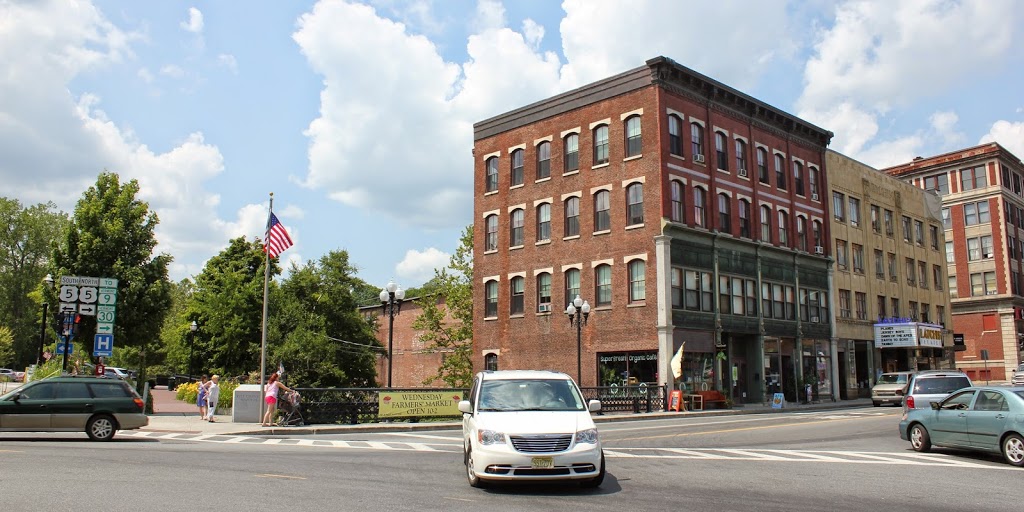The view looking south on Campbell Road (today Barrington Street) sometime before the 1917 Halifax Explosion. Photo courtesy of the Nova Scotia Archives.
The scene in 2014:
It’s not in New England, but Halifax has historically had close ties with New England, particularly in the aftermath of the Halifax Explosion, when an ammunition ship exploded in the harbor on December 6, 1917, leveling much of the city and killing several thousand people. This section of road was right near ground zero, and the buildings in the first photo, if they were still standing before the explosion, were certainly not standing afterward. The first photo was probably taken around 1900, in what was at the time a mix of residential and commercial uses. Today, the waterfront (left) side of the road is primarily industrial, with some commercial development to the right. Overall, the c.1900 scene is entirely unrecognizable today.












